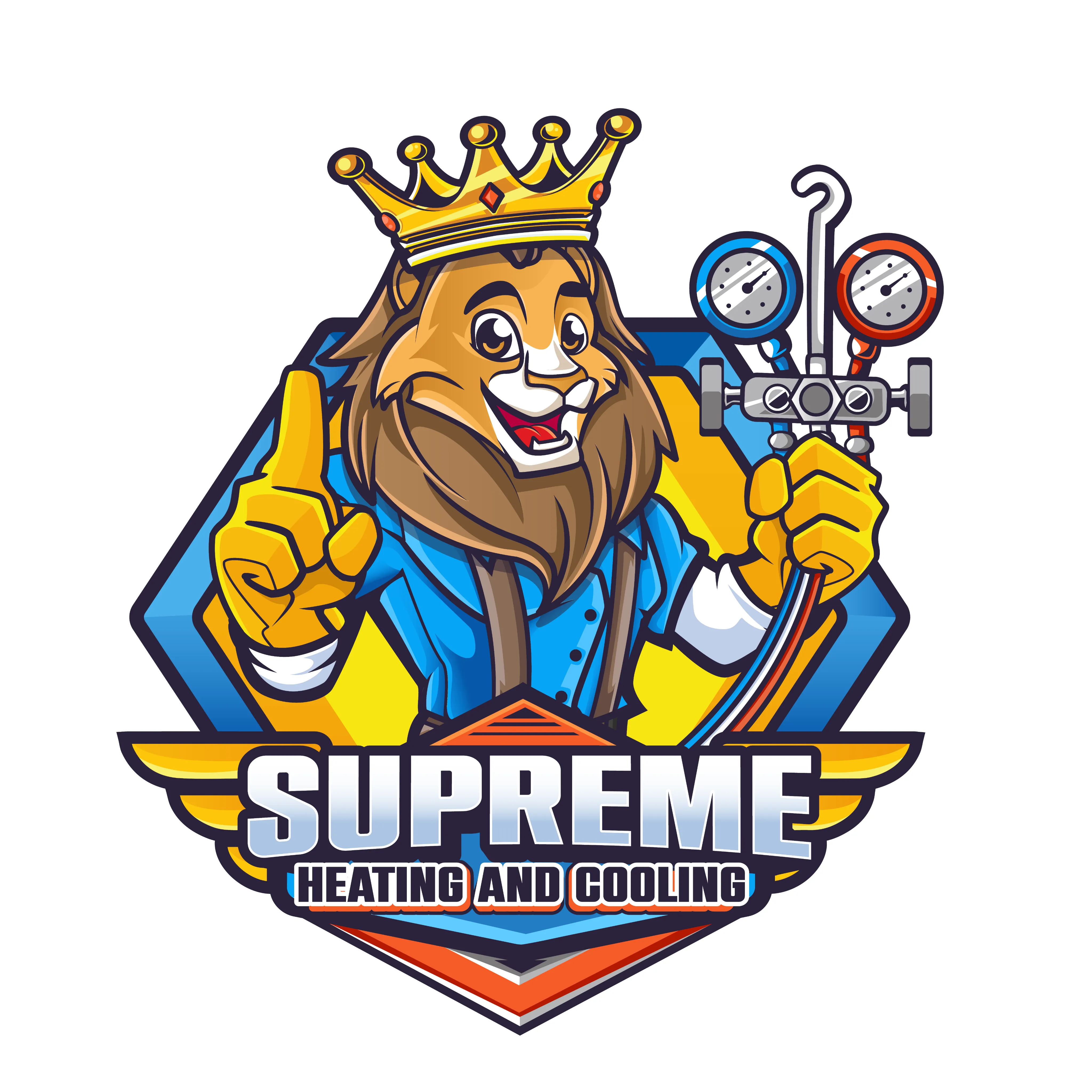.jpeg)
Mold isn’t always easy to detect, but when it’s growing in your HVAC system, it can cause a long list of problems inside your home. Residents in North Huntingdon often overlook HVAC maintenance during the summer months when keeping cool is the priority. What they don’t realize is that the damp, warm environment inside the system can create the perfect conditions for mold to spread.
If your home smells musty when the air turns on or if your allergies seem to flare up more indoors, mold could be the cause. An unnoticed mold issue can lower indoor air quality and lead to bigger problems with your HVAC system. Addressing it now can help you avoid more serious HVAC repair needs in North Huntingdon down the line.
Understanding Mold Growth in HVAC Systems
Mold needs three things to grow: moisture, warmth, and organic material. Your HVAC system can provide all three, especially during periods of high humidity. When condensation builds up in the ducts or evaporator coils, and debris like dust or pollen is present, it creates the perfect spot for mold to develop and spread through the air every time the system runs.
Some of the most common reasons mold grows inside home HVAC systems include:
– Clogged drain lines leading to standing water
– Dirty or damp air filters that don’t get changed regularly
– Faulty insulation around ducts causing condensation
– Inadequate ventilation or airflow restrictions
– Leaks in ductwork or around the air handler
Once mold spores settle into these areas, they start to reproduce. Every time the HVAC unit runs, those spores can circulate into your living spaces.
Common Signs of Mold Growth
Mold doesn’t always show up where you can see it. Here are some signs to watch for if you suspect it’s hiding in your HVAC system:
– A musty or damp smell throughout the house, especially near vents
– Visible black or green spots on air registers or inside ductwork
– More frequent allergy or asthma symptoms while indoors
– New or worsening respiratory problems
– Visible water stains or condensation around the HVAC unit
If you’re home for long periods and notice you suddenly feel better when away for a while, mold in the HVAC system could be pushing out poor-quality air that’s affecting your health. One local homeowner noticed their family’s constant sinus issues cleared up during a weekend trip, only for symptoms to return as soon as they got back.
The Health Risks of Mold in Your Home
Mold inside an HVAC system moves through the ductwork and into rooms throughout the house. Breathing in those spores over time can cause a variety of health problems. Children, the elderly, and anyone with a weakened immune system or respiratory condition are especially sensitive.
Potential health risks include:
– Persistent coughing or sneezing
– Wheezing or difficulty breathing
– Eye, nose, or throat irritation
– Skin rashes or sensitivity
Even if no one in your home has health issues now, long-term exposure can increase the chances of developing allergic reactions or respiratory problems. The presence of mold can also cause damage to your HVAC system over time, leading to breakdowns that require professional HVAC repair in North Huntingdon.
Preventative Measures
Stopping mold before it has a chance to grow should always be the goal. Consistent maintenance plays a big role in prevention, and a few simple actions can keep your HVAC system cleaner and healthier.
Here’s what homeowners in North Huntingdon can do:
– Replace air filters every 1–3 months so moisture and debris don’t collect
– Schedule seasonal tune-ups to check for leaks, debris, or drainage issues
– Install a whole-house dehumidifier to control indoor humidity
– Keep return and supply vents unblocked for proper airflow
– Seal duct leaks to prevent moisture from entering hidden areas
– Clean around the HVAC unit to remove dust and reduce air contaminants
Good ventilation throughout the home is also important. Bathrooms, kitchens, and laundry rooms should have working vents or exhaust fans to move moist air out of the space quickly. This reduces humidity across the home, which helps your HVAC system stay dry and less likely to support mold growth.
Identifying Mold Issues Early
Catching mold problems early can prevent major repairs and health issues later. For homeowners in North Huntingdon, the earlier you identify a problem in your HVAC system, the easier it is to fix without major disruption.
The first place to check is the ductwork and around the vents. Black, gray, or green spots along the edges of registers often mean spores are present. Also look for signs of excess moisture or water stains near duct joints or around the air handler. Even if these signs aren’t visible, a musty odor coming from the system can be an early warning.
If you suspect there’s mold but can’t see it, professional indoor air quality testing can provide clarity. These tests measure mold spore levels in the air and compare them to normal baselines. If the results suggest mold is coming from the HVAC system, a targeted inspection will help determine the source.
There’s also advanced equipment that our professionals use, like video scope inspections that allow interior duct viewing. This is especially helpful when mold forms deep inside hidden duct sections that homeowners wouldn’t be able to access or inspect on their own.
Professional Mold Remediation
Once mold gets into the HVAC system, cleaning it out thoroughly takes more than just wiping a few surfaces. Mold roots itself in organic material like dust and insulation. If left too long, it spreads through the ductwork and airflow. A full remediation process is the safest way to return your system to a healthy state.
Our professionals follow a step-by-step method:
1. Isolate the affected areas to prevent cross-contamination
2. Use specialized tools to clean and vacuum out mold from inside coils and ducts
3. Apply antimicrobial treatments to eliminate remaining spores
4. Repair or replace damaged duct sections or insulation
5. Perform a final HVAC system test to confirm clean airflow
After remediation, the unit is dried and sealed to ensure no moisture builds up again. If there were underlying issues like blocked drainage or airflow disruption, those are addressed as part of the process to keep the problem from coming back.
It’s also common for our technicians to offer guidance on how to prevent mold from recurring. That could mean upgrading air filters, installing UV lights, or improving the layout of duct runs to minimize risk.
Keeping Your HVAC System Mold-Free Year-Round
Once the system is cleaned, continuous upkeep is necessary. Mold doesn’t need much to start growing again if moisture makes its way back into the unit. Preventing that from happening can be done with a little extra attention each season.
Here are a few practical steps:
– Schedule seasonal HVAC tune-ups to check for moisture buildup or leaks
– Monitor indoor humidity and keep it under control year-round, especially during the summer
– Use higher-quality filters designed to trap smaller spores and airborne particles
– Check attic and crawl spaces for leaks as they contribute to unwanted dampness around ductwork
– Add insulation to exposed duct lines to reduce internal condensation
Sometimes, parts of the HVAC system can’t be cleaned effectively, especially heavily contaminated insulation or duct board. In those cases, swapping in mold-resistant duct materials or upgraded registers can make a long-term difference.
Safeguard Your North Huntingdon Home
Routine inspections can keep small problems from turning into household-wide issues. Having your HVAC system looked at once or twice a year by trained professionals reduces the chances of mold building up silently. If anyone in the house starts dealing with constant sinus problems, coughing, or headaches, it could be tied to poor indoor air from contaminated ductwork.
Besides health, mold affects HVAC performance over time. It can clog evaporator coils, reduce airflow, and cause uneven cooling, increasing energy use in the summer heat. A clean HVAC system doesn’t just help you breathe easier, it keeps the entire system running stronger and longer.
Air quality matters in every part of your home. In North Huntingdon, dealing with mold in your HVAC system early can prevent it from becoming a serious problem later. If you suspect something’s off, it’s always better to have it checked than ignore it. Taking early action is the best way to maintain a healthy environment year-round.
If your HVAC system is showing signs of mold damage, schedule reliable HVAC repair in North Huntingdon to restore airflow and protect your indoor air quality. Supreme Heating and Cooling is committed to ensuring your home stays safe and comfortable. For a quick estimate or to book a service visit, please contact us today.

.svg)

.webp)


.svg)
.webp)
.svg)
